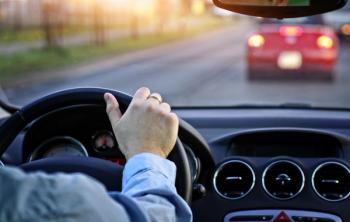
NOA 2024: Identifying uncommon etiologies of pediatric uveitis
Kefla G. Brown, OD, MS, overviewed her NOA Convention talk on identifying both common and uncommon etiologies of pediatric uveitis.
Uveitis can be the first sign of a systemic autoimmune disease in children, according to Kefla G. Brown, OD, MS, director of pediatric optometric services at Ochsner Children’s Health Center in New Orleans, Louisiana. “The treatment is essentially the same, but it’s just sometimes the causes are not necessarily as obvious,” she said.
Brown highlighted some of the common and uncommon causes of pediatric uveitis in her presentation during the National Optometric Association Convention, entitled, “Horses and Zebras: Common and Not-so-Common Etiologies of Pediatric Uveitis,” held in Philadelphia, Pennsylvania from July 11-14.
While both adults and children can often have rheumatoid arthritis or Crohn disease as underlying causes for chronic uveitis, pediatric patients can also have etiologies linked to gastrointestinal inflammatory disorders – including irritable bowel syndrome and ulcerative colitis — and head and/or ocular trauma. Brown said that those with local and systemic inflammatory conditions are often risk factors for developing uveitis.
However, Brown said not every case of uveitis is due to chronic disease. If a pediatric patient enters her office experiencing uveitis for the first time, she will not check for an underlying chronic condition, unless the case is bilateral. “A lot of times it’s just once the systemic condition is controlled, its controlled, and then you’ll just get a flare when the systemic condition is flared up,” Brown said.
For traumatic cases, she said to check for angle recession, blood in the anterior chamber (hyphema), and tears or damage to the iris. In some cases – particularly traumatic angle recession and autoimmune disorders), uveitis and its consequences will have to be monitored and treated over time. Symptoms of uveitis can manifest as pain deep in the eye, sensitivity to light, and a specific redness around the cornea known as ciliary flush.
Brown said signs of uveitis include a cloudy appearance to the aqueous humor (flare) and keratic precipitates on the cornea endothelium, as well as posterior synechiae, where the pupillary margin sticks to the lens. “The main thing that we’re looking for is cells in the anterior chamber and flare in the anterior chamber,” Brown said.
Additionally, Brown stated that delays in a pediatric uveitis diagnosis may be due to repeated visits to the pediatrician when eye inflammation is diagnosed as conjunctivitis and is then not responsive to antibiotics or other medications. “At that point the inflammation has been lingering for so long that you start to get those keratic precipitates and those secondary signs of uveitis,” Brown said. To mitigate these diagnostic delays, she said it starts with educating pediatricians on differences between presenting signs of uveitis and conjunctivitis, as well as to check the patient’s history for ocular trauma and systemic inflammatory conditions.
Newsletter
Want more insights like this? Subscribe to Optometry Times and get clinical pearls and practice tips delivered straight to your inbox.





